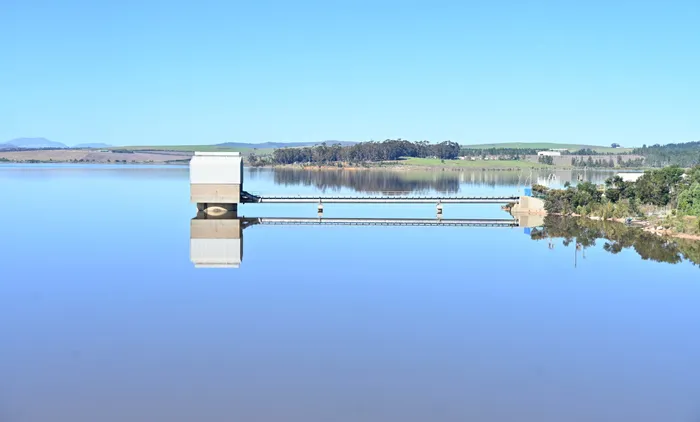Western Cape dam levels hold steady despite recent rainfall

A view of Theewaterskloof Dam near Villiersdorp, the largest reservoir in the Western Cape Water Supply System, currently at 58.79% as rainfall stabilises catchments but fails to significantly raise dam levels.
Image: Photographer Ayanda Ndamane /African News Agency (ANA)
The Department of Water and Sanitation (DWS) has reported that while recent rainfall in the Western Cape has had a stabilising effect on river catchments, it has not significantly improved dam levels across the province.
According to hydrological data, the dams supplying the Western Cape Water Supply System (WCWSS) are currently at 58.44%, a slight decrease from last week’s 59.02%.
The WCWSS provides water to over 3 million residents, spanning the City of Cape Town and towns in the Overberg, Boland, West Coast, and Swartland regions.
Provincial DWS Head, Ntombizanele Bila-Mupariwa, said the recent rains had helped stabilise the Western Cape River Catchment, but the improvement was marginal.
"The recent precipitation in the province did not have any significant impact on the provincial dam levels, but it has, however, stabilised the Western Cape River Catchment as compared to last week,” said Bila-Mupariwa.
The Theewaterskloof Dam, the largest in the province and a key reservoir supplying over half of the WCWSS, is currently at 58.79%, down slightly from 59.49% this time last year.
The Gouritz River Catchment, which includes the Central and Little Karoo and a humid coastal strip, is faring better at 72.21%, showing dramatic improvement from below 35% five years ago.
Bila-Mupariwa highlighted the growing challenge of climate variability and warned that erratic rainfall, influenced by global weather phenomena like El Niño and La Niña, could affect long-term water security.
“The DWS can only manage bulk supply (in storage), expected demand by user sectors (through applied restrictions, if need be) but cannot manage the unpredicted weather,” she said.
“The impacts of El Niño and/or La Niña have affected the current weather patterns.”
She stressed that most of the Western Cape receives its rainfall in winter, which is then stored for use during the drier spring and summer months.
However, climate change has introduced more frequent dry spells and droughts, particularly around the Berg River Catchment area, as seen from 2016 to 2018.
Consumers from all sectors, including domestic, industrial, and agricultural, are being urged to use water sparingly amid these conditions.
“Water is Life, Sanitation is Dignity,” Bila-Mupariwa said.
IOL News
Get your news on the go, click here to join the IOL News WhatsApp channel.
Related Topics: